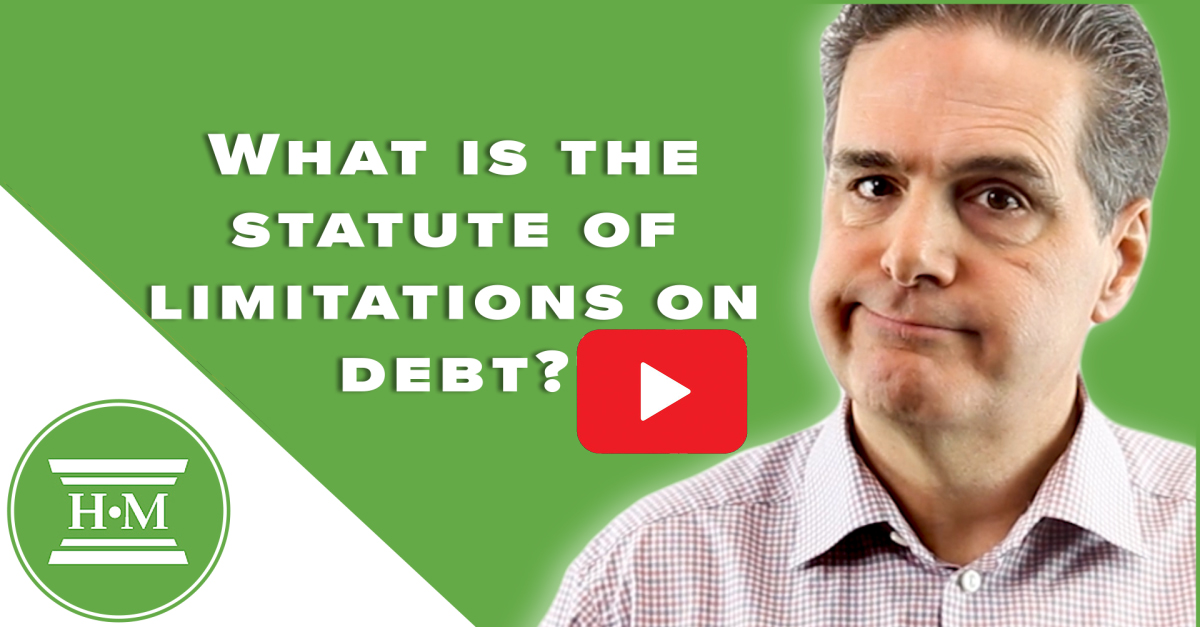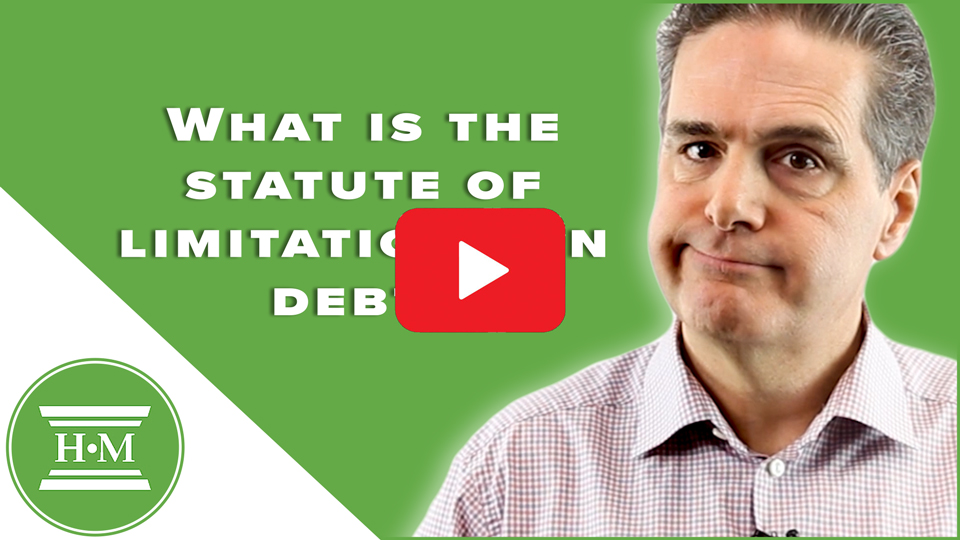
Is it true that ignoring an old debt will make it go away? Not exactly. There are a few misconceptions about the Ontario Limitations Act and debt collection. Understanding debt collection laws, including the limitation period, is crucial determining what you should do next.
Table of Contents
The Ontario Limitation Period
The Ontario Limitations Act sets out time limits for legal actions, including debt collection. The Act’s primary purpose is to ensure that legal disputes are resolved within a reasonable timeframe while evidence is still fresh and available.
In Ontario, the basic statute of limitations on debt is two years. This means creditors and debt collectors have two years from the date of your last payment or acknowledgment of the debt to take legal action against you.
After two years, a creditor can make collection calls but can’t sue or get a court order to garnish your wages or freeze your bank account.

Types of Debts Affected And Exceptions
The two-year limitation period applies to many common types of unsecured debts, including:
-
Credit card debts
-
Personal loans
-
Lines of credit
-
Retail store cards
-
Payday loans
However, it’s important to note that not all debts are subject to this limitation period. There are exceptions:
-
Government debts have a longer limitation period. CRA has up to 10 years to collect income tax and GST remittances and 6 years for most student loans.
-
Secured debts (like mortgages or car loans) may have different limitation periods, in some cases of up to 10 years. The details of these limitation periods are beyond the scope of this article, so if you have questions, please consult your Licensed Insolvency Trustee or a lawyer.
-
Family support orders have no limitation period for filing a spousal or child support claim.
Another exception is a creditor’s legal right of offset. This allows a creditor to take money they might owe you to offset what you owe them. For example,
Statute-Barred Debts and Bankruptcy
A recent court ruling determined that a statute-barred debt is not a claim provable in a bankruptcy or consumer proposal. If the debt is over two years old, a creditor cannot file a claim for any payments distributed through your insolvency proceeding.
The implications of this ruling may be that creditors may be more willing to sue before the statute of limitations period expires to ensure they receive some form of debt recovery.
Tired of creditor calls?
What Starts the Collection Period and What Can Reset It
Several actions can trigger the start of or reset the limitation period.
Starting the Clock
The two-year limitation period typically begins from the date of:
-
Your last payment on the debt
-
Your last written acknowledgment of the debt
-
The first time you defaulted on the debt (missed a payment)
In most cases, the latest of these dates will be considered the starting point for the two-year period.
Resetting the Clock
It’s important to be aware that certain actions can reset the two-year limitation period, giving creditors and debt collection agencies a fresh two years to pursue legal action. The clock can be reset by:
-
Making a payment: Any payment, even a small one, can restart the limitation period.
-
Acknowledging the debt in writing: This includes signed agreements to pay, emails confirming the debt, or even certain types of online communication.
-
Making a written promise to pay: If you promise in writing to repay the debt, this can reset the clock.
Be cautious when communicating with creditors or debt collectors about old debts. Even seemingly innocent actions like confirming you owe the original creditor or agreeing to repayment could be interpreted as acknowledging the debt.
What Happens to Old Debts?
Once a debt passes the two-year mark from the date of your last payment or acknowledgment, it enters a grey area under the Ontario Limitations Act known as statute-barred debts.
While you still legally owe the debt, creditors face significant hurdles in pursuing legal action against you.
Key points to remember:
-
The debt still exists and creditors can still attempt to collect the debt through calls or letters.
-
The debt can be sold to a debt buyer or debt collection agency for collection.
-
If sued, you must appear in court and raise the limitation period as a defence to prevent a court judgment against you.
-
Any payment or written acknowledgment of the debt can “reset the clock” on the limitation period.
-
Be cautious about making partial payments on old debts, which can revive the creditor’s right to sue.
Collection Limitation vs Credit Reporting
While the Limitations Act affects legal action, it’s separate from how debts appear on your credit report. In Canada, most negative information, including unpaid debts, remains on your credit report for six years from the date of last activity.
This six-year “purge rule” means that debt is automatically removed from your credit report after this period. However, it’s crucial to understand that this doesn’t mean the debt is forgiven or no longer owed—it simply no longer affects your credit score.
While the two-year mark is significant for legal action, six years is an important milestone for your credit report:
-
Most negative information, including unpaid debts, is purged from your credit report after six years.
-
The debt’s removal from your credit report doesn’t mean it’s forgiven or no longer owed.
-
Your credit score may improve once credit bureaus remove old debts from your report.
Dealing with Old Debts: Your Options
Get A Personalized Debt Free Plan
"*" indicates required fields
When faced with old debts, you have several options to consider:
Ignoring the Debt
While it might be tempting to ignore an old debt, especially if it’s past the two-year mark, this approach comes with risks:
Pros:
-
The debt may become statute-barred, limiting the creditor’s legal options.
-
After six years, it should no longer appear on your credit report.
Cons:
-
The debt doesn’t go away, and you still legally owe the money.
-
Creditors may continue to contact you or sell the debt to collection agencies.
-
It could impact your ability to obtain credit in the future.
Settling Old Debts
Negotiating a settlement with your creditors can be a viable option:
-
You might be able to settle for less than the full amount owed.
-
It can provide closure and stop collection efforts.
-
However, be aware that any payment can restart the two-year limitation period.
Given the risk of restarting the limitation period, we recommend discussing legal debt settlement options with a Licensed Insolvency Trustee.
Considering Bankruptcy or a Consumer Proposal
If you have significant unsecured debt, formal debt relief options may be necessary:
-
A consumer proposal allows you to repay a portion of your debts over time.
-
Bankruptcy can provide a fresh start by discharging most unsecured debts.
-
Both options can stop collection actions and legal proceedings.
Just because a debt is “old” does not mean it goes away. Don’t assume you can just do nothing if you have old debts. If it’s under two years old, the Limitations Act doesn’t apply, and your creditor can sue you. If it’s more than six years old, it’s not on your credit report, but your chances of getting another loan at your former creditor is slim or will come at the cost of extreme interest rates. If you owe the government money, you owe the government money. There’s no way around that.
If you are experiencing debt problems, we can help you make a plan to become debt free.





